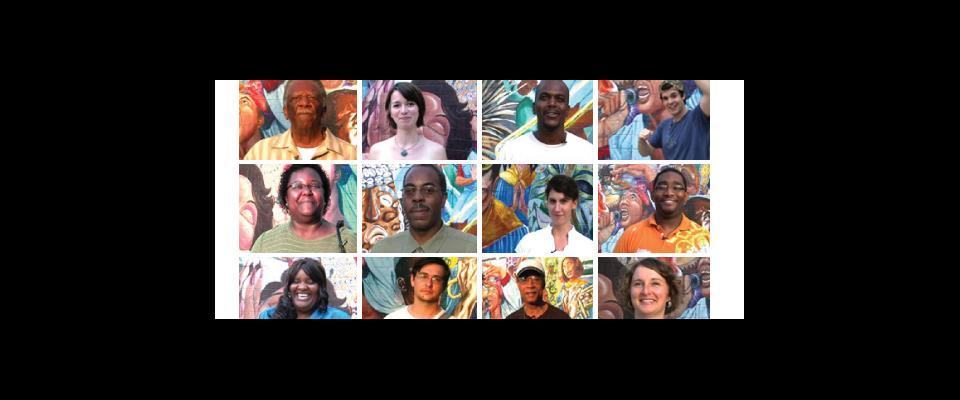“For me,” said Caricia Catalani, “public health is a way of getting at poverty.” and for Catalani, a 2008 fellow at Berkeley’s Human Rights Center who got her Ph.D. in Public Health this year, videography is a way of doing public health.
In 2007, Catalani and a team that included her husband, New York director Anthony Veneziale, started a small nonprofit called VideoVoice collective (Learn more). “Our goal was to put cameras in the hands of everyday people so they can tell their own stories,” she said. When the group was invited to New Orleans by acquaintances of Catalani’s academic adviser, she gathered together some grant money (including $3,500 from the Human Rights Center), bought 16 video cameras, and went to Central City. During Hurricane Katrina, the neighborhood had suffered more damage from wind than from flooding and had “lost what minimal resources they had.”
The goal of the video project is to examine problems that cumulatively affect people’s health. Mental health issues—including higher suicide rates, intense posttraumatic stress disorder, anxiety, and depression—were rampant, Catalani said. But even conventional services were in short supply: The nearest hospital had been closed since Katrina hit, and it was difficult to find doctors to provide most services, Catalina said. “There’s no health care to speak of for low-income people.”
The Central City filmmakers included a minister active in social justice, a social worker, a doctor, a teacher, a restaurant worker, a civil rights historian, and some people in alcohol recovery programs. The participants started shooting environmental footage and holding storytelling workshops. They practiced interviewing and developed a list of questions. They watched documentaries and picked them apart. “That’s kind of the fun part,” Catalani said, “because everyone in the United States that I’ve ever met is a film critic.”
Setting locals in charge of the shooting script helped tap into the neighborhood’s strength and resilience, she said. Over time, three themes emerged as crucial—housing, economic development, and schools. The result is In Harmony: Reflections, Thoughts, and Hopes of Central City, a 20-minute, three-part film whose structure is familiar to viewers of Ken Burns documentaries. It also has a few New Orleans touches: jazz, of course, and a charming string of credits in which participants describe their favorite po’boy sandwiches. (Clips of the film can be seen on youTube under VideoVoicecollective.)
In Harmony produced some concrete results: work for some of the participants as experienced camera operators or film editors. And the team promptly went to work on a second film, which premiered in May, that focused on African-American girls and young women in a New Orleans neighborhood called the Treme.



















